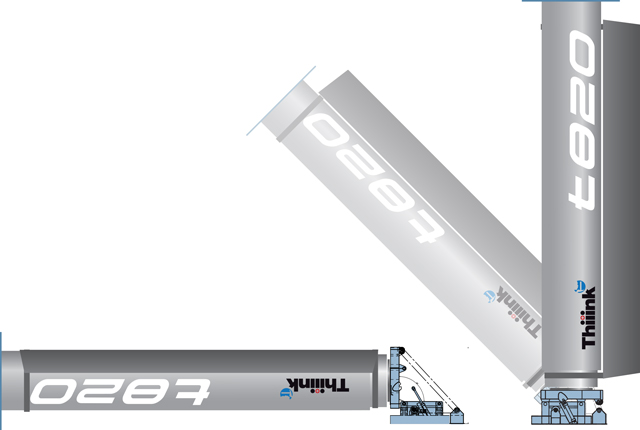The same physics effect that allows pitchers to throw sliders and sinker balls was once used to propel ships. And, if this Swedish engineering firm is successful, it will again.
Known as the Magnus Effect, the phenomenon is commonly observed in the way spinning balls curve away from their initial flight paths such as the way sinkers sink, curveballs curve and sliders slide. Essentially the ball’s backspin generates lift on its top side, which causes it to curl.
The same effect is observed in old Flettner ships (named for the inventor of the “Flettner rotor”, German engineer Anton Flettner). These ocean-going vessels utilised a pair of vertical, rotating cylinders instead of a conventional underwater propeller. As they’d spin, the rotors would generate thrust through the Magnus effect, pushing the ship forward. Unfortunately, this method was far less efficient than simply hooking the engine up to a propeller and was therefore generally abandoned save for a few niche efforts.
However the Magnus Effect has made something of a comeback in recent years with a number of oceanic shipping companies employing them above the waterline as supplemental drives to reduce the fuel consumption of a ship’s primary propulsion as well as below the waterline as a stabiliser system.
Most recently, the Swedish Thiiink company has developed a new version of the Flettner rotor that uses a small “flap sail” to increase its efficiency. Working in conjunction with a consortium of European engineering firms including Airbus, Huisman, Constellium, Schaeffler, Bosch, Liebherr and Walter Hunger, Thiiink has begun installing a pair of 47m tall rotors on a Suezmax-class LR2 product tanker. These rotors will be controlled from the ship’s bridge and will be mounted on hydraulic joints, allowing them to fold down onto the deck when entering port or otherwise not in use.

Picture: Lloyd’s Register
This 110,000 dwt tanker, which normally sails from Canada’s Cabot Strait across the Atlantic to the English Channel, could see as much as 28 per cent efficiency gains and a main engine output reduction of nearly 40 per cent when using this system, according to Thiiink. However, as GCaptain points out, there are a number of mitigating atmospheric factors that must be overcome before such a system can be widely adopted:
With wind angles on the beam of the ship, the rotors will generate a significant amount of forward thrust, however this will result in a narrower angle of attack on the vessel’s propeller blades, in turn making them less efficient. If a vessel has a controllable pitch system, the optimised pitch and revolutions of the propeller blades while using the rotors in different wind conditions and directions would have to be considered with any vessel routing solution.
If the vessel which is to be retrofitted is using a fixed pitch propeller, the efficiency gains would certainly still be positive while using such a system, however not as positive as they could be if the blade angles themselves could be optimised while underway.
In addition, the lateral force created on the bow by the rotors would have a direct affect on the rudder angle needed to keep the vessel sailing in a straight line. The greater the angle needed, the more drag created, thus reducing the overall potential efficiency gains.
Furthermore, forecasted winds and wind angles based on voyage plans are only as good as the data provided. Even when coupled with highly sophisticated software, someone still needs to make the “tactical” decision of where to turn the ship given a multitude of possible options based on what may or may not happen with the weather and currents.
Still, given the massive amounts of fuel that our current generation of super-sized delivery ships consume for every trip across the oceans, any sort of efficiency gain — whether it comes from onboard solar panels or spinning masts — could translate into huge economic advantages for any company willing to invest in them. [Wiki 1, 2 – GCaptain – Lloyd’s Register]
